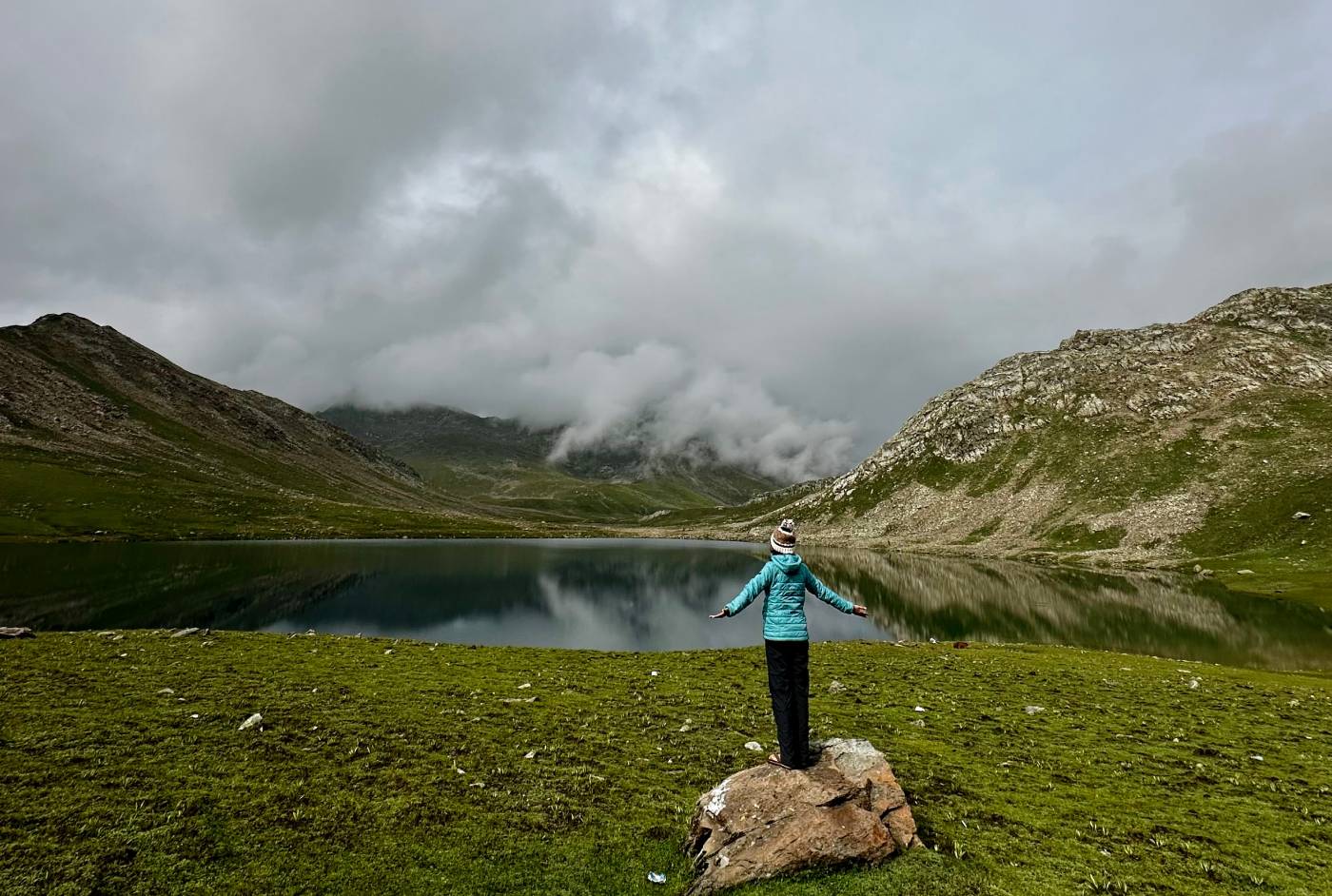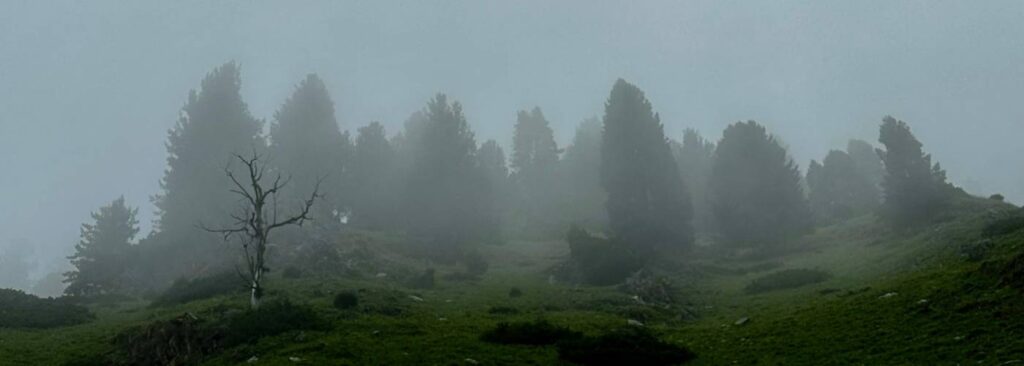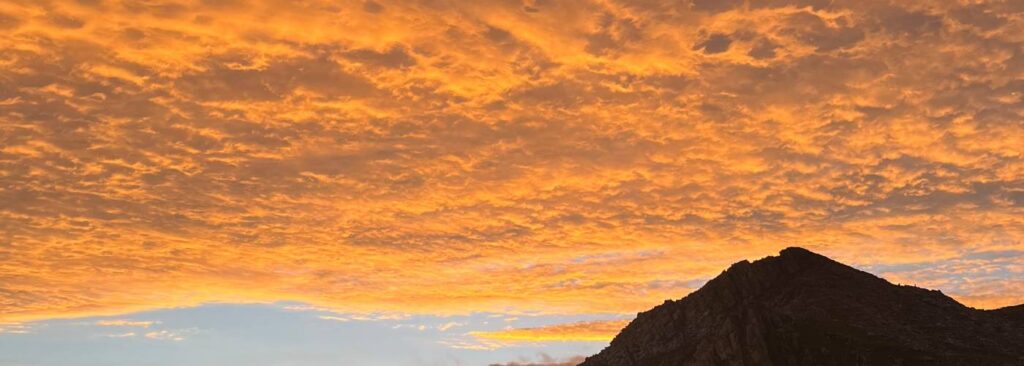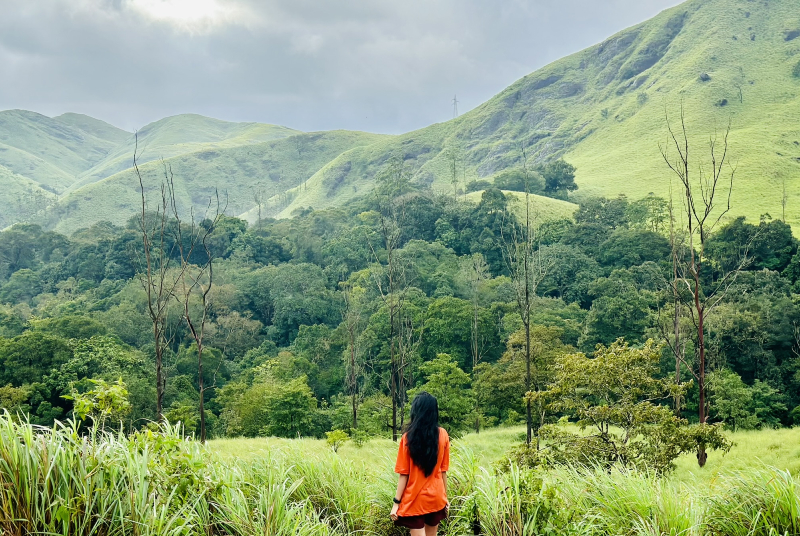
Margan Top to Choharnag: An Offbeat Kashmir Trek You’ll Never Forget
An August journey through rain, alpine lakes, golden sunsets, and the kindness of strangers.
A Hidden Jewel Beyond the Clouds
Some treks don’t just test your endurance — they shift your perspective.
Choharnag via Margan Top is one of Kashmir’s quietest gems, untouched by tourist footprints and commercial chaos. Hidden deep in the southern Kashmir region, this trail is a love letter to silence, raw nature, and slow travel.
In August 2024, I walked this route with one of the renowned trekking groups in india, carrying both a backpack and my emotions. It rained, I slipped, strangers helped, the sky opened — and I witnessed one of the most magical sunsets of my life.
My Trail: Jhopdi → Choharnag → Khelansar Summit → Margan Top
Unlike the typical Margan Top → Choharnag descent, we took the quieter route in reverse, starting from the Jhopdi campsite and gradually working our way up to Choharnag, summiting Khelansar, and finally exiting through Margan Top.
This was a 3-day trek, not a quick day hike — and every day had its own magic.
Day 1: From Jhopdi to Choharnag – A Day Drenched in Rain
We began our trek from Jhopdi campsite at 7 AM. Within half an hour, it started to rain — not the romantic kind, but steady, soul-soaking, relentless rain that didn’t stop until nearly 4 PM.
We trekked through fog-draped meadows and slippery slopes. But the deeper we went, the quieter it got — no sounds but boots in the mud and raindrops on leaves. Somewhere between exhaustion and surrender, we reached Choharnag, where the alpine lakes shimmered under a post-rain glow.
And then it happened — the sky opened.

The sunset painted the lake gold. I stood there in wet socks and goosebumps, watching the last light dance on the water. I wasn’t tired anymore — I was just present.
We pitched our tents right in front of the lake. It felt like nature had rewarded us for making it through the storm.
Day 2: The Summit Push – Khelansar, Silence & Solitude
On Day 2, the rain had passed. After a warm breakfast, we headed for the Khelansar summit — the towering peak guarding Choharnag. The climb was steep but short, and the views at the top were otherworldly.
It wasn’t just about reaching the summit. It was the solitude — no one else, just wind and clouds.
Looking down at the lake from Khelansar, I felt both powerful and small — like nature had gently reminded me of my place in its vastness.
Some trekkers descend to Margan Top directly from here. But we chose to return to Choharnag and spend one more night under the stars, beside the lake that had already healed something inside us.
Day 3: Choharnag to Margan Top – Easy Descent, Heavy Heart
Our final day was gentler — a slow and scenic descent to Margan Top. The clouds had cleared, meadows stretched endlessly, and the valleys below looked like a painting.
We met Gujjar nomads on the way — a few even helped us during the rainy climb earlier. Their quiet resilience, simple smiles, and connection to the land humbled me deeply.
By the time we reached Margan Top viewpoint, the trek had ended — but something had shifted inside.
Where Is Margan Top & Choharnag?
- Margan Top: A high-altitude pass in South Kashmir (approx. 3,600 m), connecting Anantnag with the Warwan Valley.
- Choharnag: A remote alpine lake nestled below the Khelansar summit. Accessible only by foot.
- Jhopdi Campsite: A forest clearing and basecamp used by Indiahikes in the meadows near Kokernag region.
Best Time to Trek
- Season: Mid-July to early September
- August: Expect rain, lush meadows, fewer crowds, and clear post-rain skies
Camping, Food & Essentials
- Camping: 2 nights at Choharnag, by the lake
- Water: Natural streams near the lakes
- Food: Provided by trekking group(hot, vegetarian, nourishing)
- Toilets: Dry toilet tents at campsite
- Essentials:Rain protection (poncho or full jacket), Sturdy trekking shoes, Layered clothing, Personal meds, torch, waste bag, Warm fleece — nights are cold even in August
Backpacker Tips
- Carry a quick-dry towel — you’ll need it.
- Respect the Gujjar community — no selfies without consent.
- Keep your phone on airplane mode — there's zero network anyway.
- Bring a notebook or journal — this trail has things to tell you.
- Don’t rush the exit — the descent from Choharnag to Margan Top is meant to be felt.
- Don’t plan Rudranath if you are not ready for basic stays.

Final Thoughts
This isn’t a trek you’ll find in every travel guide. It’s raw, quiet, and filled with moments that aren’t loud — but they last.
If you’re searching for solitude, silence, and sunsets that feel like answers, Choharnag via Margan Top is your trail.
Explore my full stories and soul-treks across Kashmir:
How difficult is the Margan Top to Choharnag trek?
This is a moderate-level trek. While the distances aren’t very long, the trail includes steep ascents, slippery sections (especially in rain), and high-altitude exposure. Good fitness, layered clothing, and proper trekking shoes are recommended.
How many days does this trek take?
The trek typically takes 3 days:
Day 1: Jhopdi campsite to Choharnag Lake
Day 2: Choharnag to Khelansar summit (optional) and back
Day 3: Choharnag to Margan Top exit
Some trekkers may descend to Margan Top directly after the summit on Day 2, depending on weather and energy.
Can beginners do this trek?
Yes, fit beginners with prior hiking experience can attempt this with a certified operator like Indiahikes. However, be prepared for rain, altitude, and remote conditions. Mental preparedness is as important as physical strength.
What is the best time to do the Choharnag trek?
The ideal time is from mid-July to early September. August offers lush green meadows, clear post-rain skies, and fewer crowds. However, expect rainfall, so proper gear is essential.
Is camping allowed near Choharnag Lake?
Yes, regulated camping is allowed as part of organized treks. We camped right in front of the lake with a clear view of Khelansar Peak. Always leave no trace, avoid noise, and respect local Gujjar communities and wildlife.
How do I reach the starting point (Jhopdi campsite)?
Reach Anantnag or Kokernag from Srinagar (approx. 5–6 hrs by road)
From there, the operator provides a private vehicle to Jhopdi campsite
The area is remote and may require coordination with your trekking company
Is this trek safe for solo travelers?
If you’re trekking with a group or trusted organization, yes — it’s very safe. Going completely solo (unguided) is not recommended due to the lack of mobile network, unmarked trails, and unpredictable weather.
Rinkal
Rinkal is a passionate traveler from Ahmedabad who loves exploring hidden gems, savoring local foods, and sharing adventures with fellow wanderers. Rinkal’s goal is to inspire others to travel on a budget while truly experiencing the essence of each place.









Leave a Reply